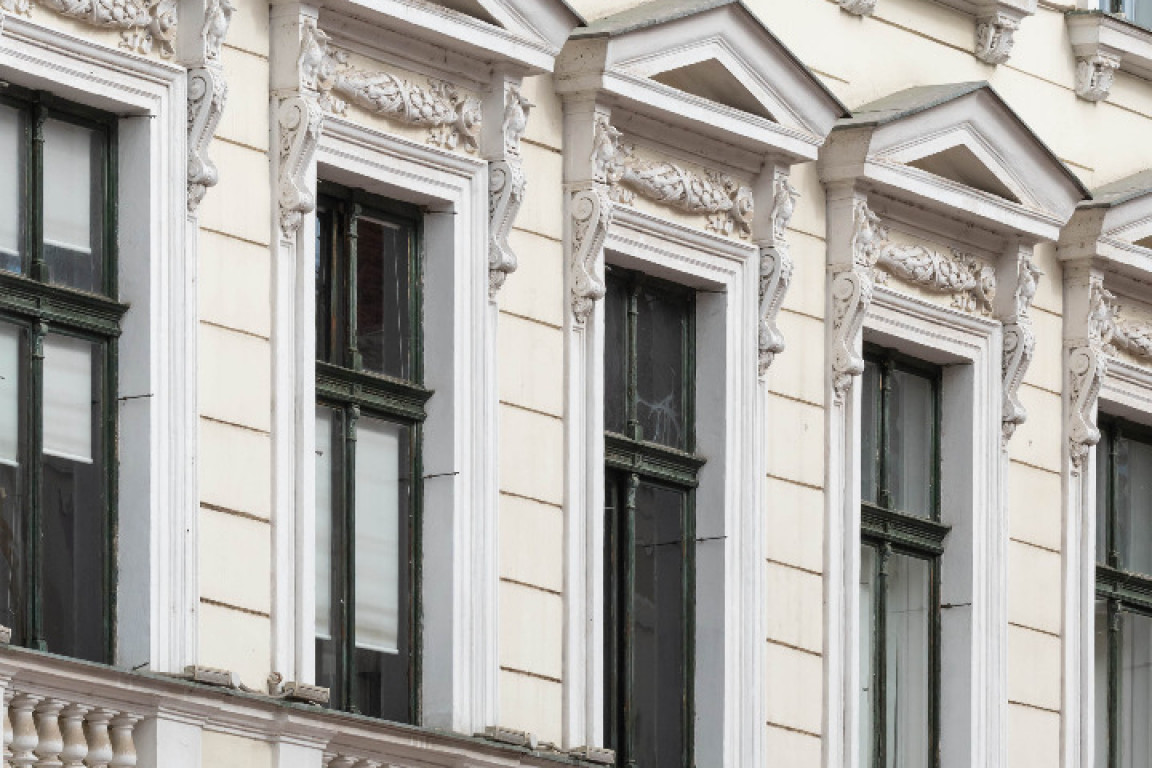The theatre was designed by an architect from Vienna, Ferdinand Fellner Senior, and its construction began in 1872. A year later, the architect's son founded the firm Fellner & Helmer, taking over the supervision of the construction site in Timișoara. The two architects are known throughout Central and Eastern Europe as the main designers of theatre buildings. In 1875 they completed the construction works, which resulted in an imposing building, richly ornamented in the spirit of the time. It was notable for the ornamental exuberance of its facades, which used elements of classical vocabulary.
Just 5 years after the inauguration, on 30 April 1880, a fire devastated the building, which was completely rebuilt by 1882, according to the original design. The building underwent further restoration works at the end of the century, when it was renamed the "Ferencz József" City Theatre. The change in administration following the First World War was another chapter in the history of the building. In addition to having its name changed to “The Palace of Culture" (still its official name today), the building was again destroyed by a fire on the night of 31 October 1920. Reconstruction works began three years later and were marked by the solemn laying of the foundation stone by King Ferdinand I of Romania on 12 November 1923. The works, carried out between 1923 and 1926, involved modifications to the interior according to the design of an architect from Bucharest, Duiliu Marcu. He proposed a Neo-Romanian aesthetic with eclectic elements. On the outside, the building did not undergo major changes, except in the access area, where the three entrances that ended in semicircular arches were united in a single entrance. Another change was to the roof, where a semidome was built to house the new water tank.
The most drastic change took place in the 1930s, following a project to rebuild the main façade designed once again by architect Duiliu Marcu. He proposed a stylistic purification of the façade, in line with international trends of the time, particularly under the influence of Italian Fascist architecture, a direction that in Romania was known as the "Carol II style". The architect from Bucharest reimagined the old façade of the theatre in the form of a monumental triumphal arch decorated with Neo-Romanian motifs, a gesture with a strong political charge. In 2003, new restoration works returned the sides of the main façade to their original appearance, but the triumphal arch was preserved because of its strong symbolic charge, especially after 1989, when the "Opera balcony" became one of the main locations and symbols of the anti-communist Revolution.










Add your contribution to this building!
Written by Rodica SOCOLIUC, 2 years ago
Felicitări pentru site-ul heritageoftimisoara.ro! Exhaustiv, ușor accesibil! Ca timișoreanca nu știu de unde a apărut sintagma Palatul Culturii? Niciodată noi nu am numit această clădire altfel decât Opera. Indiferent dacă am fost la un spectacol de teatru sau opera. Când merg la Teatrul German, nu consider și nici nu spun că merg la Palatul Culturii. Mulți timișoreni dezavuează acest termen ca fiind nereprezentativ. Revoluția din Decembrie 1989 s-a desfășurat în balconul Operei! Încercați să reveniți asupra numelui încetățenit de Opera, chiar dacă în esență această clădire este un palat al culturii prin cele patru instituții ce funcționează acolo. Dar pentru majoritatea timișorenilor nu va fi altceva decât Opera. Mulțumesc